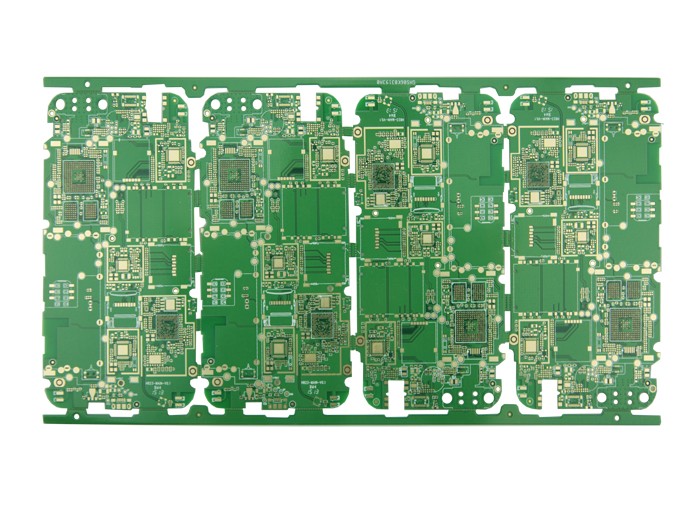PCB board manufacturers have three types of PCB board welding methods: front grip, reverse grip and pen grip. It is more convenient to hold a pen when welding components and repairing PCB boards.

1.Manual welding is generally carried out in four steps. 1. Preparation for soldering: Clean the dust and oil stains on the components to be welded, and then break the components around the components to be welded, so that the electric soldering iron head can touch the solder of the components to be welded, so as to prevent the soldering iron head from extending Scald other components during welding. When soldering new components, the leads of the components should be tinned. 2. Heat soldering: contact the soldering iron head with a little solder and rosin to the components to be soldered for about a few seconds. If you want to remove the components on the printed board, after the soldering iron tip is heated, gently pull the components with your hands or silver to see if they can be removed. 3. Clean the soldering surface: If there is too much solder on the soldered part, you can shake off the solder on the soldering iron tip (be careful not to burn your skin or throw it on the printed PCB board!), and "dip" some solder with a light soldering tip . If the solder joint is too small and not smooth, you can use an electric soldering iron tip to "dip" some solder to repair the solder joint. 4. Check the solder joints: check whether the solder joints are round, bright and firm, and whether they are connected to the surrounding components.
2. Reasons for poor welding quality
The requirements for the solder joints of manual welding are: 1. good electrical connection performance; 2. has a certain mechanical strength; 3. smooth and round.
The common reasons for the low welding quality are: 1. Too much amount of solder, which forms the accumulation of tin in the solder joint; too little solder, not enough to cover the solder joint. 2. Cold welding. When soldering, the temperature of the soldering iron is too low or the heating time is insufficient, the solder is not completely melted, wetted, the surface of the solder is not shiny (not smooth), and there are small cracks (like tofu dregs!). 3. When soldering with rosin, there is a layer of rosin between the solder and the components or the printed board, causing poor electrical connection. If there is insufficiently heated rosin, there will be a yellow-brown rosin film under the solder joint; if the heating temperature is too high, there will be a black carbonized rosin film under the solder joint. In the case of insufficiently heated rosin film, a soldering iron can be used for repair soldering. For the black film that has been formed, it is necessary to "eat" the net solder, clean the surface of the soldered components or the printed board, and re-soldering. 4. Solder bridge. Refers to the excessive amount of solder, causing short circuits between the solder joints of the components. This should be particularly noticed when soldering ultra-small components and small printed PCB boards. 5. Excessive flux, there are many rosin residues around the solder joints. When a small amount of rosin remains, you can use an electric soldering iron to gently heat it to let the rosin evaporate, or you can use a cotton ball dipped in absolute alcohol to wipe off the excess rosin or flux. 6. The solder on the surface of the solder joint forms a sharp tip. This is mostly caused by insufficient heating temperature or too little flux, and improper angle when the soldering iron leaves the solder joint.
3. Welding of vulnerable components
Vulnerable components refer to components that are easily damaged when heated or contacted with an electric soldering iron during installation and welding, such as organic cast components, MOS integrated circuits, etc. Fragile components should be carefully prepared for surface cleaning and tinning before soldering. Avoid repeated hot soldering for a long time during soldering. The temperature of the soldering iron tip and soldering iron should be selected appropriately to ensure a successful soldering. In addition, use less flux to prevent the flux from invading the electrical contacts of components (such as relay contacts). It is best to use an energy storage electric soldering iron for welding MOS integrated circuits to prevent damage to the integrated circuit due to the weak leakage of the electric soldering iron. Because the lead spacing of integrated circuits is very small, it is necessary to choose a suitable soldering iron tip and temperature to prevent tin connection between the leads. It is best to weld the ground terminal, output terminal, power terminal first, and then the input terminal when welding the integrated circuit. For those components that are particularly sensitive to temperature, you can use tweezers to clamp a cotton ball dipped in ethanol (alcohol) to protect the roots of the components, so that the heat is transmitted to the components as little as possible.
For the above PCB board welding techniques, ipcb company also provides PCB manufacturers, PCB board manufacturing, etc.